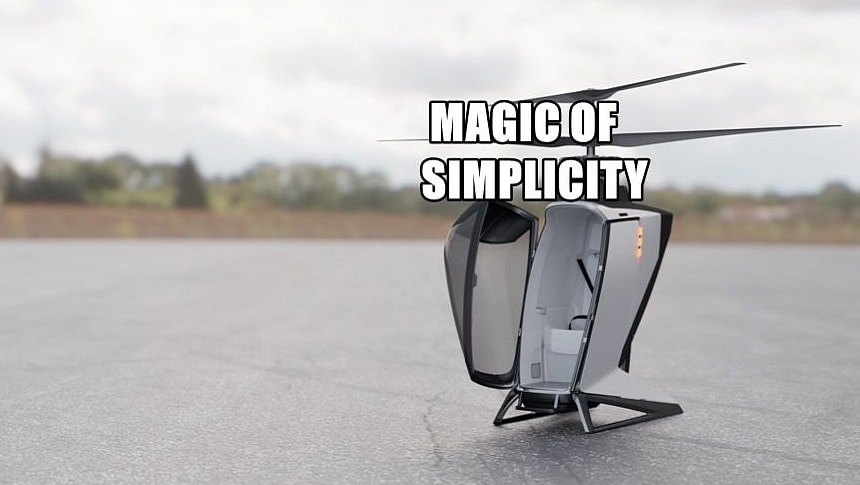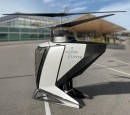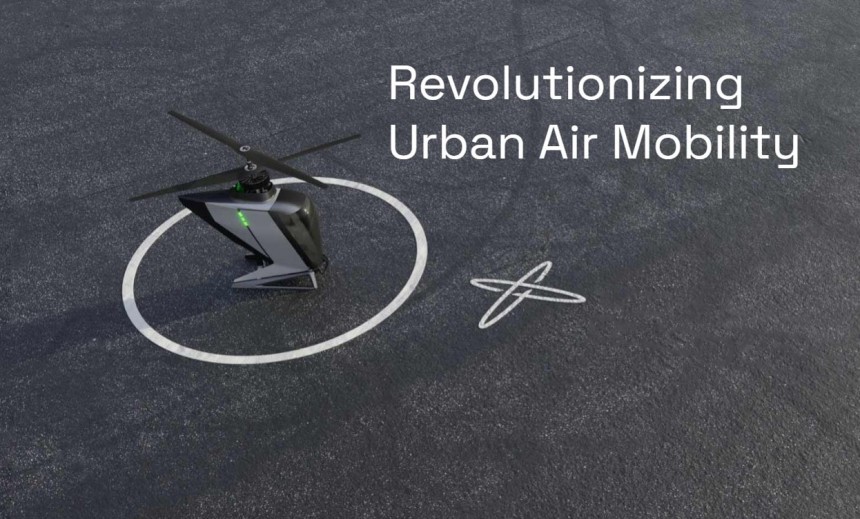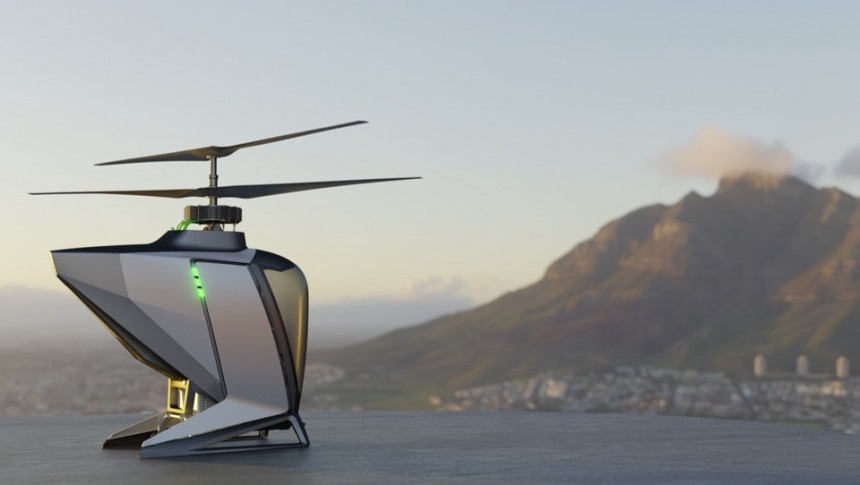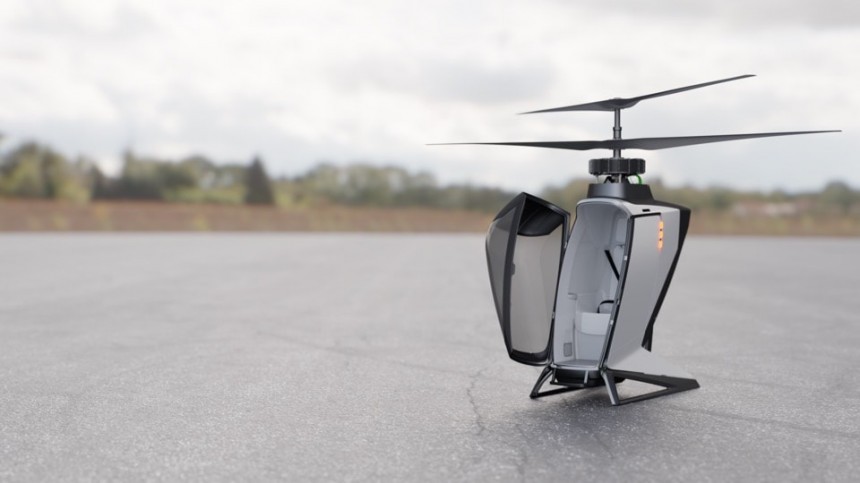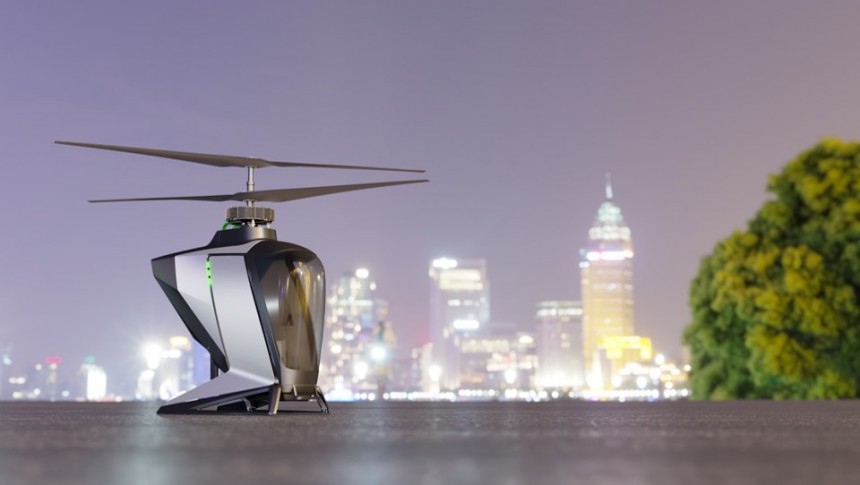Human flight is no longer a novelty. Nor is it any longer fun, if you ask Austrian startup FlyNow, which argues that the industrialization of flight has sucked all the fun out of it, among other things. The eCopter could fix that.
For the past several years, we've been hearing about countless eVTOL (electric takeoff and landing aircraft) concepts that would democratize individual flight, bringing convenience, heightened efficiency, and reduced pollution to our everyday life. FlyNow Aviation is also promising fun.
The eCopter is a new type of eVTOL that takes a different approach to get ahead of the competition. Like its many competitors, no matter how bombastically they describe their features or advanced tech, the eCopter doesn't exist yet, and when it does get to prototype stage, it will still need certification.
It's here that FlyNow believes they can make a real difference since the eCopter is not a quadcopter drone like similar products and won't operate autonomously or be piloted without a license. The eCopter has a coaxial electric drivetrain with two counter-rotating rotor propellers placed one over the other, with several redundancies for safety, which means it qualifies as an electric helicopter.
The eCopter is a Personal Air Vehicle (PAV), which means it's also automatic. Getting certification should be easier when the time comes.
Each propeller is powered by a separate motor made up of four motor parts, where the remaining three can still operate it if the fourth fails. It integrates safety elements like the ability to make an evasive maneuver in flight if it crosses paths with a large bird or to hover in place if sensors pick up an incoming aircraft on the same flight path.
FlyAviation deliberately opted out of betting on autonomous capabilities because the tech is not there yet. Instead, they made their aircraft automatic, which means it flies on predetermined paths, much like a regular airliner.
It is an air taxi mostly for inner city use, or in the case of cargo taxis, for use on certain routes – for example, from shore to coastal waters carrying supplies for ships. FlyNow Aviation calls this 3D mobility.
The biggest promise that FlyAviation makes with the eCopter is none of the above, but rather that flying an eCopter would be no more expensive than taking a taxi on land. The goal of the company is to make individual flight fun and fascinating again, but also accessible to everyone, more sustainable, more convenient, and overall better. What's there not to love, right?
According to the company, because of the drivetrain, the eCopter uses fewer parts, which means fewer odds of malfunctions but also lower production and maintenance costs. Its small physical footprint and light weight require less resources, which, again, means smaller production costs and, later on, a bigger production capacity.
An early estimate is that production costs will be 10 times smaller than with a similar eVTOL. Simple is best, they say, but in a more pompous way: "Perfection is achieved when there's nothing left to take away," and the rather Orwellian "simple is complicated enough."
But you get the idea: where other companies promise tech-packed aircraft that can do everything but press and fold your clothes as they ferry you to your destination, the eCopter aims for the most basic eVTOL, which makes it more likely to reach production with the best results.
The eCopter will be offered as a passenger and cargo model, but both will use the same airframe, also to keep production costs down. The plan is to offer a single- and two-person layout for the former, but seeing how maximum payload is rated at 210 kg (463 lbs), which means 120 kg (264.5 lbs) for one passenger and luggage, using the same airframe for both without adjustments doesn't seem possible. The math doesn't math, to put it bluntly.
With a range of 30 minutes of flight or about 50 km (31 miles) on a single charge, the eCopter will fly at speeds of 130 kph (81 mph) at altitudes between 150 meters and 300 meters (492-984 feet).
Emissions will be 0 g of CO2 per kilometer traveled, with noise emissions under 55 dB(A) – so a truly sustainable means of transport. Cheap, too, if FlyNow Aviation manages to keep the original promise of fares comparable to standard, four-wheel, ICE (internal combustion engine)-powered taxis.
If you're thinking these promises add up to a classic "too good to be true" scenario, FlyNow Aviation probably understands where the skepticism is coming from. That's why they mention that the team led by CEO Jürgen Greil is made up of experienced members with backgrounds in "traffic engineering and transportation, aerospace engineering, computer science, manufacturing engineering and business administration, [and] development and industrialization of complex technologies in the mobility industry."
The eCopter concept has been around for a couple of years but doesn't have a prototype yet. FlyNow says it has conducted successful ground tests on a full-scale proof-of-concept model and is working on the prototype now. No word on when production might kick off, but we're still looking at at least a 2-year waiting period for the development.
The eCopter is a new type of eVTOL that takes a different approach to get ahead of the competition. Like its many competitors, no matter how bombastically they describe their features or advanced tech, the eCopter doesn't exist yet, and when it does get to prototype stage, it will still need certification.
It's here that FlyNow believes they can make a real difference since the eCopter is not a quadcopter drone like similar products and won't operate autonomously or be piloted without a license. The eCopter has a coaxial electric drivetrain with two counter-rotating rotor propellers placed one over the other, with several redundancies for safety, which means it qualifies as an electric helicopter.
Each propeller is powered by a separate motor made up of four motor parts, where the remaining three can still operate it if the fourth fails. It integrates safety elements like the ability to make an evasive maneuver in flight if it crosses paths with a large bird or to hover in place if sensors pick up an incoming aircraft on the same flight path.
FlyAviation deliberately opted out of betting on autonomous capabilities because the tech is not there yet. Instead, they made their aircraft automatic, which means it flies on predetermined paths, much like a regular airliner.
The biggest promise that FlyAviation makes with the eCopter is none of the above, but rather that flying an eCopter would be no more expensive than taking a taxi on land. The goal of the company is to make individual flight fun and fascinating again, but also accessible to everyone, more sustainable, more convenient, and overall better. What's there not to love, right?
According to the company, because of the drivetrain, the eCopter uses fewer parts, which means fewer odds of malfunctions but also lower production and maintenance costs. Its small physical footprint and light weight require less resources, which, again, means smaller production costs and, later on, a bigger production capacity.
But you get the idea: where other companies promise tech-packed aircraft that can do everything but press and fold your clothes as they ferry you to your destination, the eCopter aims for the most basic eVTOL, which makes it more likely to reach production with the best results.
The eCopter will be offered as a passenger and cargo model, but both will use the same airframe, also to keep production costs down. The plan is to offer a single- and two-person layout for the former, but seeing how maximum payload is rated at 210 kg (463 lbs), which means 120 kg (264.5 lbs) for one passenger and luggage, using the same airframe for both without adjustments doesn't seem possible. The math doesn't math, to put it bluntly.
Emissions will be 0 g of CO2 per kilometer traveled, with noise emissions under 55 dB(A) – so a truly sustainable means of transport. Cheap, too, if FlyNow Aviation manages to keep the original promise of fares comparable to standard, four-wheel, ICE (internal combustion engine)-powered taxis.
If you're thinking these promises add up to a classic "too good to be true" scenario, FlyNow Aviation probably understands where the skepticism is coming from. That's why they mention that the team led by CEO Jürgen Greil is made up of experienced members with backgrounds in "traffic engineering and transportation, aerospace engineering, computer science, manufacturing engineering and business administration, [and] development and industrialization of complex technologies in the mobility industry."
